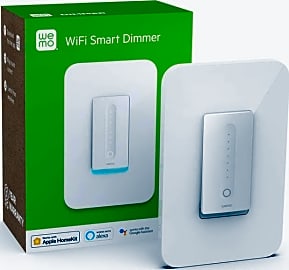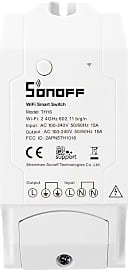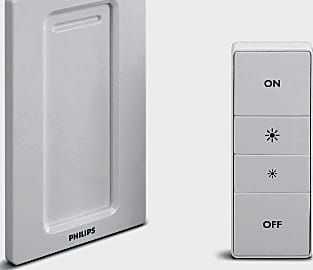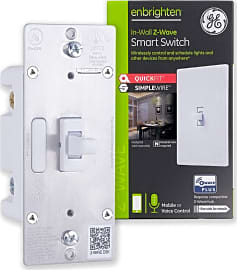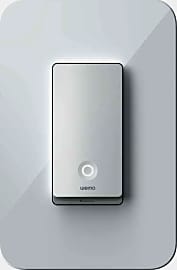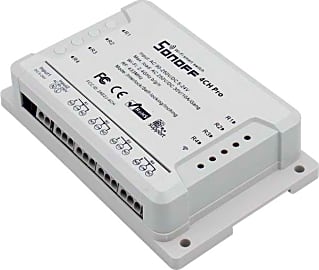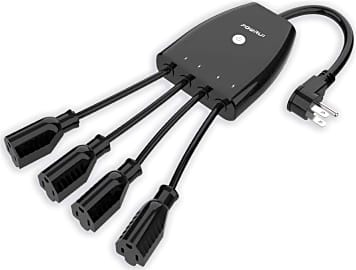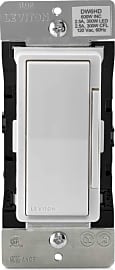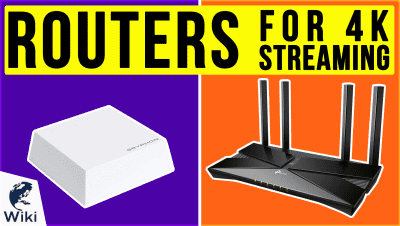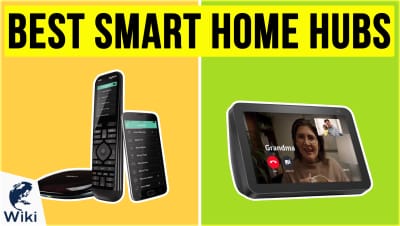The 10 Best Alexa Light Switches

This wiki has been updated 33 times since it was first published in December of 2016. Amazon's virtual assistant Alexa makes it easy to turn your house into a smart home. These compatible switches give you voice control over virtually any device, from lights to ceiling fans, and allow for automated scheduling, letting you focus on your busy life. Electrical work can be dangerous, though, so any hardwiring should be completed by a licensed professional. When users buy our independently chosen editorial picks, we may earn commissions to help fund the Wiki.
Editor's Notes
August 13, 2020:
Removed a power strip in order to feature more models that would be traditionally considered "light switches." Since most smart switches use either button or rocker style, the GE Enbrighten Z-Wave was added in order to have an old-fashioned toggle switch as an option for those who prefer it. Added the Powrui Weatherproof in order to have an option for those looking to control outdoor lights, either for a Christmas display or year-round landscaping.
Note that some models require a hub to work, while others can be linked directly to Alexa via an app. If you already own a smarthome hub, be sure to check whether or not the device you're considering is compatible with your system. Many of the options listed here work with other hired-wired devices, like ceiling fans as well as lights.
Some options, like the Philips Hue, communicate directly with smart bulbs and thus don't need to be connected to any wiring. Others need to be hooked up directly, like a standard light switch. Electrical work can be extremely dangerous and is best left to licensed professionals.
July 21, 2019:
Some of these work directly over Wi-Fi networks, in which case you'll just need a decent router to get them up and running, while others require a smart home hub to access their entire functionality. A lot of them, like the Wemo, Hue, and Sonoff, work with additional voice control systems like Google Home and Apple's Homekit, which can be incredibly useful down the line in case you switch ecosystems. TP-Link's Kasa line is incredibly popular, and their power strip version is especially useful for people who are renting a home and not willing or able to permanently install a switch. Sonoff's options are the exact opposite; they call for installation in the wall and don't actually have any kind of physical interface, so they're more geared toward larger remodeling projects where lighting arrangements are intentionally streamlined. The Lutron Caseta Deluxe kit comes with all the pieces you need to set up a comprehensive voice-controlled system, while the Hue is much more straightforward, and offers considerable customization especially with colored lights, but only works with bulbs from the Hue product line. If you need something outdoors that Alexa can handle, check out the iClever, which is one of the most reliable to boast splash protection and can withstand the heat or cold of all 4 seasons.
As with any electrical work, make sure you're comfortable doing the job, and disconnect power at the breaker before proceeding. These devices all require a neutral wire, so if the box you're working in doesn't have one, you will need a licensed electrician to come out and pull one for you. But if the neutral wire is already there, the average homeowner should have no problem adding one of these wireless light switches. On the other hand, if you want to avoid doing any wiring at all, check out our list of Alexa-compatible plugs, which connect to a standard AC outlet and are both safe and easy to get working.
A Brief History Of Alexa
The company released their Echo in 2014, which was billed as a smart speaker that could recognize your song requests.
You may not realize it, but Alexa is far from the first voice assistant that has been unleashed upon the world.
IBM was actually the first company to create a voice-recognition device all the way back in 1962, when they unveiled their Shoebox device at the World's Fair in Seattle. The machine could recognize a staggering 16 words — total.
About a decade later, researchers at Carnegie Mellon University created Harpy, a machine that could recognize over 1,000 words. A decade after that, IBM upped the ante again with the Tangora, which could identify twice as many words, as well as complete sentences.
The problem with all of these devices was that they required slow, clear speech — so typing was usually a faster option. However, in 1997, Dragon unveiled their NaturallySpeaking software, which could follow up to 100 words a minute, a version of which is still in use in the medical community today.
The technology really captured the public's attention when Apple released Siri in 2011. The company had built on decades of artificial intelligence research and voice recognition software to create an assistant that was personable and nearly human.
The gauntlet had been thrown down — and Amazon was up to the challenge.
The company released their Echo in 2014, which was billed as a smart speaker that could recognize your song requests. The software that powered this machine was a speech synthesizer with multi-directional mics named "Alexa."
The Echo was successful enough that Amazon saw an opportunity to create an entire smart-home hub. The company allowed developers to program their devices to communicate with Alexa, enabling it to control virtually every electronic device you may have in your home.
Today, there's little limit to what an Alexa-powered device can do for you. Capable of hearing and understanding you from across the room, the software can do your shopping, control your thermostat, and even keep you updated on current events. It's truly a remarkable machine, and we may still only be scratching the surface of what Alexa is capable of.
Getting Started With An Alexa Light Switch
If The Clapper was too complicated for you, you might think that there's no way you'll be able to figure out an Alexa light switch. Fortunately, it's not quite as complex as it seems.
Obviously, the first thing you need to do is find a switch that's Alexa-compatible. There are quite a few on the market, so getting one that works for you shouldn't be too difficult.
Alexa can enable you to dim your lights as needed, or turn on only lights of a certain color.
While you're shopping around, ask yourself what else you'll want to automate. Do you think you'll want an Alexa thermostat at some point, or a security system? If so, it will probably be easier to convert everything at once, especially if you'll be hiring an electrician.
Speaking of which, if you're not particularly comfortable around electricity, don't hesitate to get professional help. While Alexa light switches are certainly convenient, they're not worth getting zapped over.
You may want to re-think your lighting at the same time. Alexa can enable you to dim your lights as needed, or turn on only lights of a certain color. However, this only works if you already have that kind of lighting setup.
Once you get everything set up, though, you'll find you can limit energy waste by only turning on the lights you need. You can also turn on lights even when you can't physically touch the switch, like if you're bringing in groceries, and the whole setup is sure to impress guests.
Most importantly, though, these switches allow you to control your lighting without ever getting out of bed. Never get out of bed unless you absolutely have to.
Alexa And Privacy Concerns
Alexa is undoubtedly convenient, but many people have raised concern over its effects on privacy. After all, if it can hear your voice, what else is it listening to? And what is Amazon doing with all of that information?
According to Amazon, its devices only start to listen after you've said "Alexa." However, while that may or may not be true now, Amazon has applied for patents that open up a vast array of spying possibilities.
After all, if it can hear your voice, what else is it listening to?
In one application, they describe an algorithm that could eavesdrop on your conversations in real time, listening for phrases like "love," "hate," or "bought." This information would then be shared with advertisers, who could tailor ads and product recommendations based on your data.
When combined with allegations that companies like Facebook may have inappropriately harvested and sold your information, even the least-paranoid among us can feel like we're always being watched.
Unfortunately, that seems to be the way the world's headed. Even your smartphone can give away boatloads of information, such as where you travel and who you associate with, and there's little to stop the government from checking up on you.
If you're concerned about this, there are some steps you can take to limit the amount of data that's harvested and sold. You should wipe your voice data history regularly, as Amazon uses this to make Alexa smarter.
You should also disable voice purchases and calls. If you allow incoming calls, there's the possibility that someone even less trustworthy than Amazon or the government could dial you up and listen in on your conversation — or even watch you, if your device has a camera.
You may not be able to completely protect yourself from Big Brother (or Big Business), especially since we're still not sure of all the ways we're being monitored. With a few common sense solutions, though, you should be able to minimize how much information you're giving away — without having to live in the Dark Ages.



